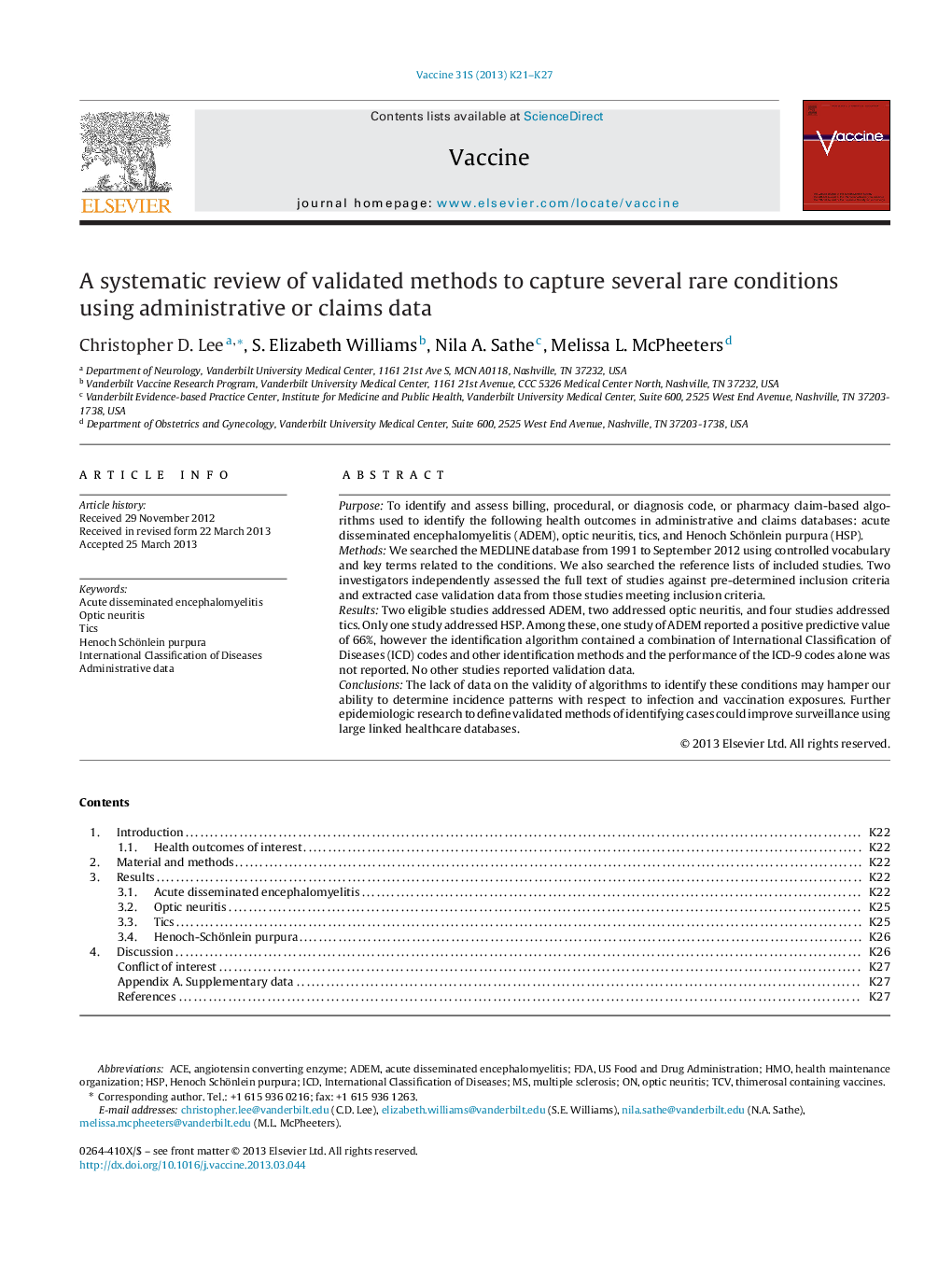| Article ID | Journal | Published Year | Pages | File Type |
|---|---|---|---|---|
| 2403440 | Vaccine | 2013 | 7 Pages |
•Few studies used administrative data sources to identify cases of these conditions.•Six studies described algorithms; two ADEM and one optic neuritis study noted validation methods.•Validation statistics cannot be calculated from the limited data presented in these studies.
PurposeTo identify and assess billing, procedural, or diagnosis code, or pharmacy claim-based algorithms used to identify the following health outcomes in administrative and claims databases: acute disseminated encephalomyelitis (ADEM), optic neuritis, tics, and Henoch Schönlein purpura (HSP).MethodsWe searched the MEDLINE database from 1991 to September 2012 using controlled vocabulary and key terms related to the conditions. We also searched the reference lists of included studies. Two investigators independently assessed the full text of studies against pre-determined inclusion criteria and extracted case validation data from those studies meeting inclusion criteria.ResultsTwo eligible studies addressed ADEM, two addressed optic neuritis, and four studies addressed tics. Only one study addressed HSP. Among these, one study of ADEM reported a positive predictive value of 66%, however the identification algorithm contained a combination of International Classification of Diseases (ICD) codes and other identification methods and the performance of the ICD-9 codes alone was not reported. No other studies reported validation data.ConclusionsThe lack of data on the validity of algorithms to identify these conditions may hamper our ability to determine incidence patterns with respect to infection and vaccination exposures. Further epidemiologic research to define validated methods of identifying cases could improve surveillance using large linked healthcare databases.
